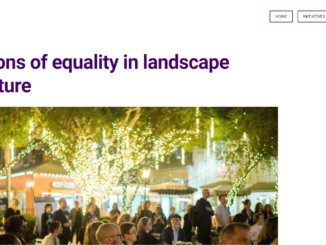The founders of WxLA offer research, strategies and tactics for creating workplaces that support more inclusive and representative design practice.
Article By Cinda Gilliland, Gina Ford, Jamie Maslyn Larson, Rebecca Leonard and Steven Spears

Architecture and design history paints a clear picture of what design leadership looks like: a white male holding a pencil, sketching for an adoring audience. While this implicit world-view marches on, it reinforces a sense of who belongs (and who does not) in the design professions. This forced-adaptation and its impacts are made evident in the discipline of landscape architecture in the data visualization work by The VELA Project, led by Samantha Solano and TJ Marston. Not tracked anywhere else with such completeness and rigor, VELA’s compelling work illustrates the slow and steady attrition of women in practice.
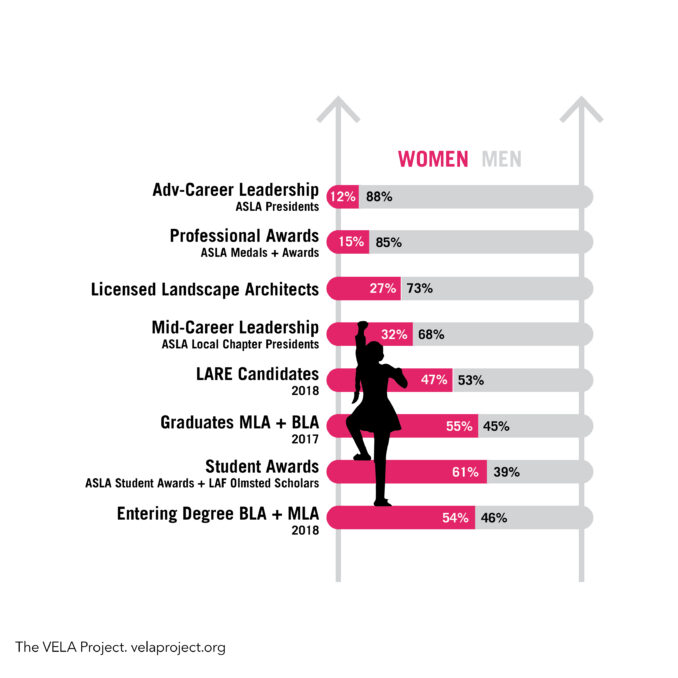
There is still bias about what a business leader looks like. Just as the team “Lead Designer” is reserved most commonly for men, so is “Firm Leader”. Running a business is a creative process – and power structures are still reserved for men. The Harvard Business Review asked nearly 200 global business leaders what the qualities of business leaders were. Among the top ten are qualities like ethical, organized, communicative. These are measurable qualities that can help decide who rises to leadership levels. Women do better when the expectations are measurable. But often, less measurable terms like “gravitas” or “command of the room” come up, allowing biases to creep into the decision-making process.
Landscape architecture practices – private, public, non-profit and academic – can be designed to be gender-just practices. Gender justice redefines practices to be inclusive, flexible, accountable, collaborative, team-oriented, and supportive of initiatives and thoughtful rule breaking. We outline here strategies to enact a gender-just practice through four lenses: transparent business, flexible human resources, systems of recourse and gender just culture.
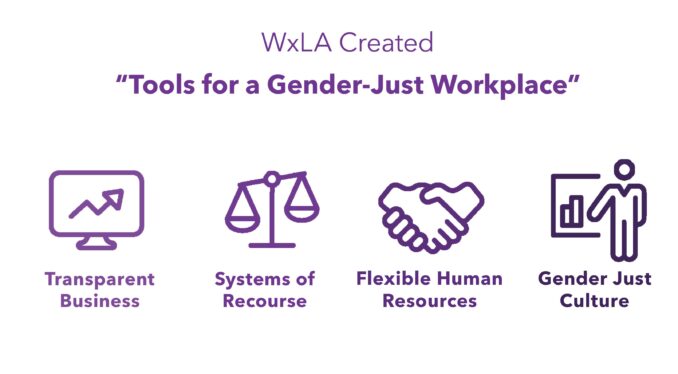
Transparent Business
Transparency is often brought up at diversity events in our field as one strategy for a gender-just practice. Transparency around business systems like project scopes and budgets, management of resources and time, client invoices and financial outcomes allow more ownership and business acuity. For business owners, invest time in your own books, your employees and actively teach them how to use the information to effect outcomes. For young or emerging professionals, inquire about firm financials so that you can learn how the business works. Seek out training, look for issues and take responsibility for solutions.
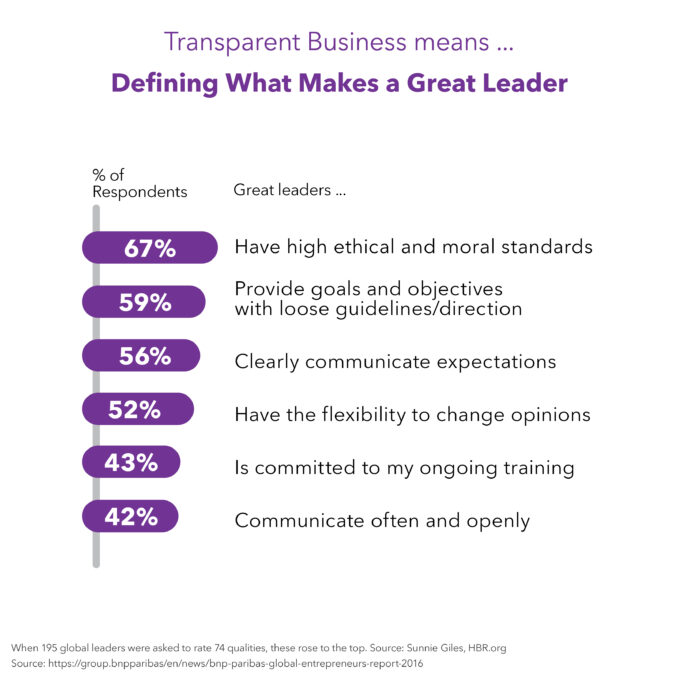
.
Next, know the business. Understand how marketing, business development, human resources and finance all come together to make a sustainable organization. For business owners and senior professionals, have a strategic plan that depicts a clear vision. Involve your entire team to some level in the development of this plan – and give them responsibilities and metrics to track. In the tension between balancing needs and desires with resources and time, priorities will become more clear. For young or emerging professionals, ask if your company has a strategic plan and if you can have a copy. Align your goals with the strategy. Ask to participate in the next strategic plan and offer to take responsibility for a few actions and metrics.
Flexible Human Resources
As practices seek to attract and retain an increasingly diverse workforce, they must also rethink the values, principles and systems that have been shaped by a less diverse, dominant power structure.
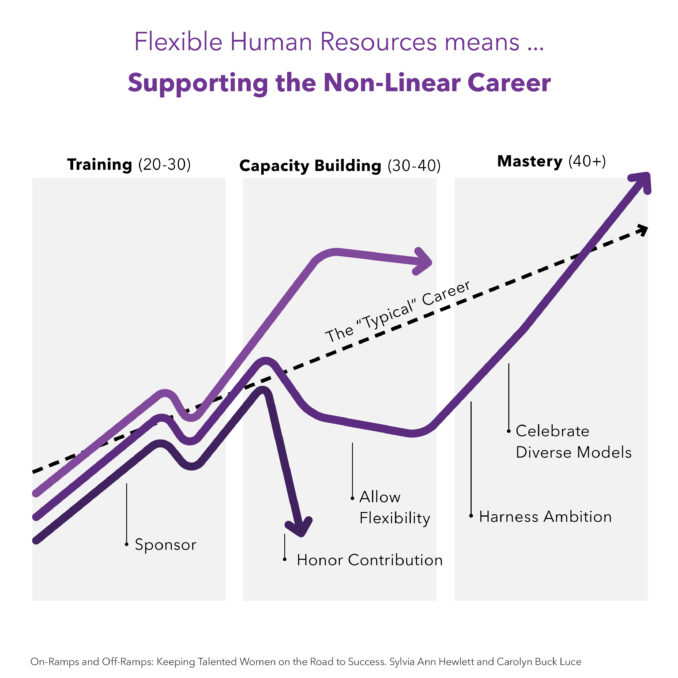
The notion of a linear career path, for instance, has not historically reflected the experience or needs of women who often must balance the demands of family and caregiving more broadly. Retention strategies to support non-linear and non-traditional careers can also shape a more appealing practice for near-retirement and next generation employees, alike, that may be seeking more flexibility and diversity of experience. Gender-just practices celebrate diverse senior leaders by sharing their strategies for success to show others what is possible. Studies show there is much to be learned from the unique and often overlooked career paths. Studies show there is much to be learned from the unique and often overlooked career paths.
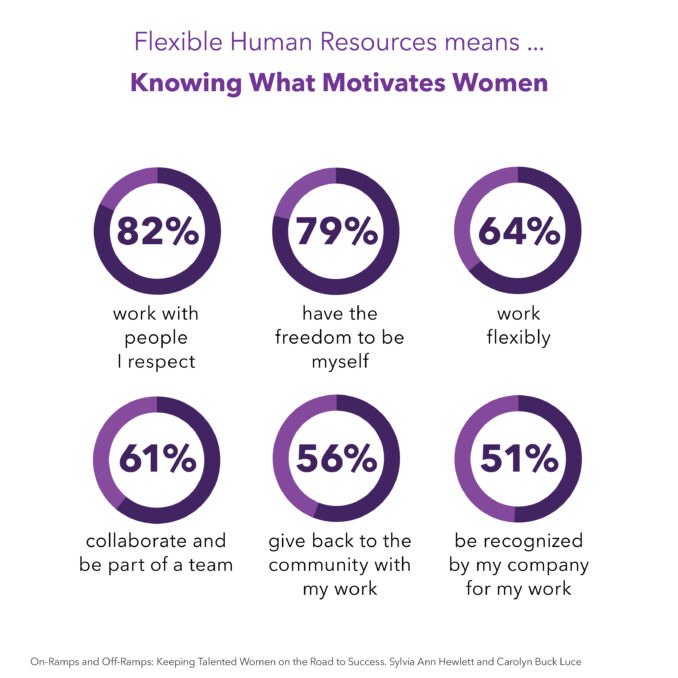
Studies also show women are motivated by different factors at work than men. Driven more by the quality of work, community and teamwork (versus power, promotion and money), women thrive in places where healthy teams, purposeful work and community-driven initiatives are supported. In a gender-just practice, leadership genuinely supports women during career transitions by recognizing contributions, offering flexibility in work hours, allowing new modes of working, and enabling autonomy and authority over how work happens. This will result in positive returns in retention, good will and boomeranging.
Sponsorship, the active exchange of talent and power, is the most critical key to success for companies wishing to support leadership and effective career paths. Employer actions to eliminate glass ceilings should include setting up workforce diversity programs, mentoring/training, hiring based on true qualifications instead of stereotypes (ie. construction administration is not often viewed as “women’s work”), examining hiring criteria to ensure they are not disproportionately impacting women and creating clear promotion criteria.
Systems of Recourse
It is not always possible to shift office culture. When there is discrimination or harrassment in the workplace, there is also the path of legal recourse. Women have rights and resources that are designed to protect them. Under Title VII of the Civil Rights Act of 1964 (volume 42 of the United States Code), employees, job applicants, and union members are protected from sex discrimination at the workplace. This law gives women the right to work in a safe, discrimination-free environment; speak out against sex discrimination at work; report, protest or file a complaint about discriminatory behavior; and testify as a witness. In addition, it is illegal for an employer to retaliate against you for doing any of these! Also covered under Title VII is the “glass ceiling” effect – an artificial barrier based on attitudes or bias that prevents qualified women from advancing into mid- and senior-level management positions.
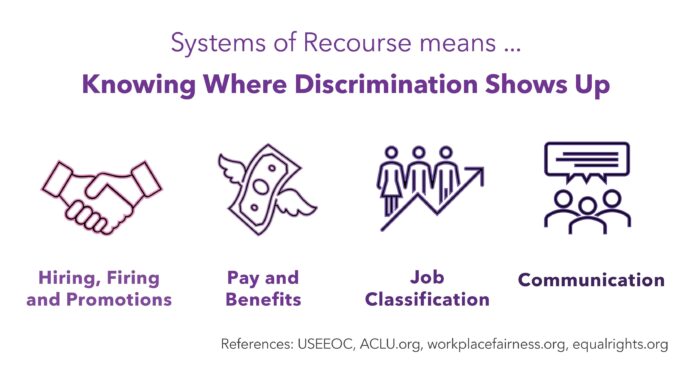
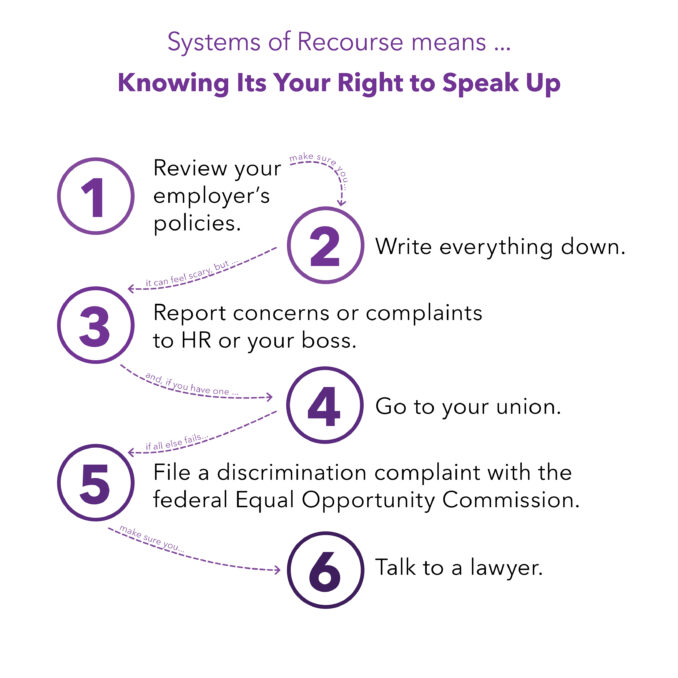
If you are experiencing discrimination, first review your employers’ policies. Write everything down. Report concerns or complaints about discrimination to Human Resources or your boss. If possible, go to your union. If you must, file a discrimination complaint with the federal Equal Employment Opportunity Commission (EEOC). Timing is important on these complaints so check your state EEOC for guidance. Lastly, you do not need legal help to file a charge, but there are plenty of nonprofits that offer free or low cost legal advice.
Gender Just Culture
Lastly, a gender-just culture must celebrate, reward and hold talent accountable fairly and equitably. To this end, clarifying the criteria for performance is essential or else bias can creep in. This is particularly difficult for hard to measure qualities like attitude and leadership. One test is the Dreaded Drama Triangle, a diagram developed by Dr. Stephen Karpman illustrating three common roles people play, all focusing on problems. The Victim feels helpless and out of control. He or she blames others instead of taking personal responsibility. The Persecutor is adversarial and seeks weaknesses in others to make themselves look better. The Rescuer swoops in to save Victims, even when unnecessary or unwanted to make themselves feel needed. When a team is stuck in the Dreaded Drama Triangle, fairness and equity can feel impossible.
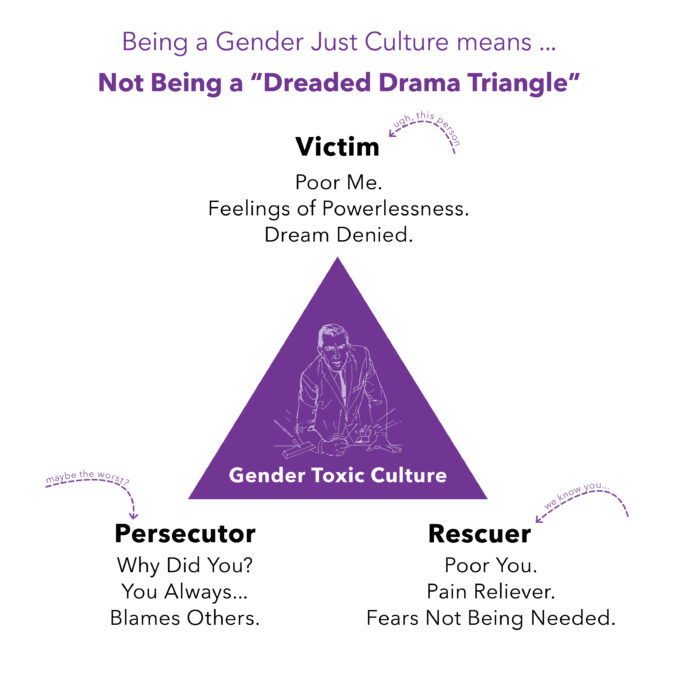
David Emerald offers an alternative in his book, The Power of TED: The Empowerment Dynamic, redrawing the diagram with roles that are focused on opportunities and positive outcomes. The Creator replaces the Victim and owns the power to create positive outcomes. The Challenger is opposite the Persecutor and uses persuasion to effect positive change. The Coach counters the Rescuer by helping people see for themselves the opportunities.
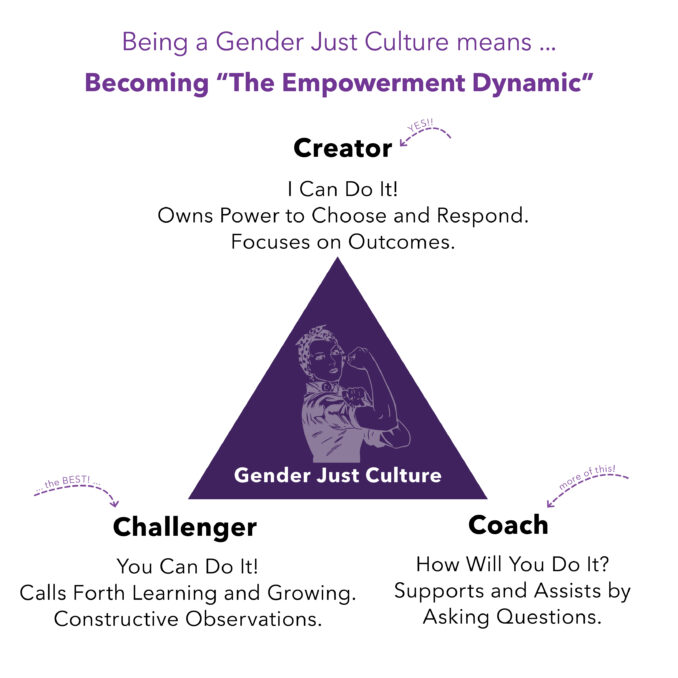
It is important in a gender-just practice that business leaders lead in a manner that is focused on positive outcomes and that they hold both genders accountable to that same standard. Rewards should only go to people that move your organization toward an empowerment dynamic. Emerging professionals can use the TED model to educate, redirect and hold accountable their mentors. By no means should anyone idolize people that bring drama to the team just because they have power. This will only reinforce the current power structure instead of turning it on its head. Traditional gender roles train women to be team players and to not rock the boat, but following these strategies can go a long way to remedy challenges and make a company a more gender-just practice.
This article was written by WxLA Co-Founders: Cinda Gilliland LEED ASLA (Reed Gilliland), Gina Ford FASLA (Agency Landscape + Planning), Jamie Maslyn Larson (BIG), Rebecca Leonard FAICP (Lionheart) and Steven Spears FASLA (Groundwork and Lionheart). Learn more about WxLA ar wxlandscape.org or follow on Instagram at @w_x_la

DISCLAIMER: This article is for educational purposes only. The content is intended only to provide a summary and general overview on matters of interest. It’s not intended to be comprehensive, nor to constitute advice. You should always obtain legal or other professional advice, appropriate to your own circumstances, before acting or relying on any of that content. This advice is general in nature.

